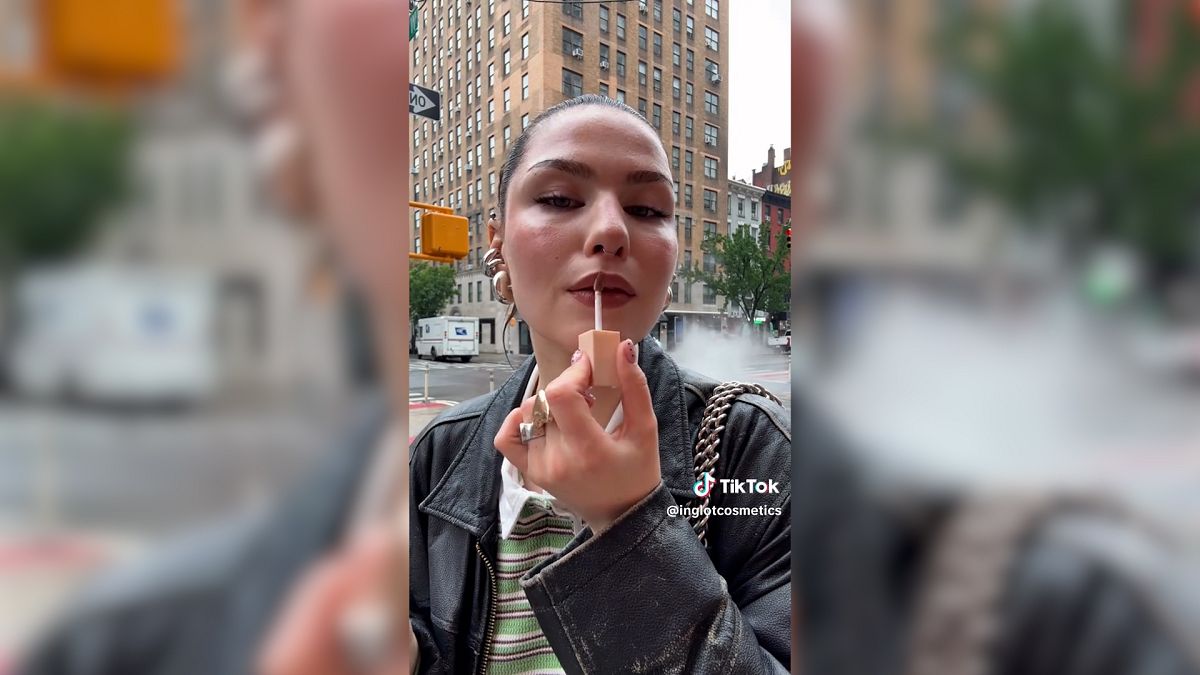The value of the European luxury goods market grew to almost €110 billion in 2024.
“This is the result of several converging factors,” assesses Rafal Drzewiecki, TikTok’s Country Director for Central Europe, in an interview with Euronews.
“The recovery of tourism after the pandemic, attractive exchange rates and the growing importance of emotional consumption. European luxury has become more accessible.”
In his opinion, a generational change is playing a key role. New consumers of luxury no longer buy for prestige. They buy for themselves.
This is borne out of the popularity of the hashtag #selfgifting, which has seen a 110% increase on TikTok in recent times alone.**
“We are seeing an explosion of content in which users celebrate their own achievements by buying themselves a gift,” said Drzewiecki, adding that “it’s not about demonstrating status, but about pleasure, satisfaction, and self-expression”.
Polish luxury conquers the world
Against this background, Poland comes off impressively. The domestic luxury goods market grew by as much as 24% year-on-year in 2023 – well above the European average. The fastest growing segments are beauty, fashion and accessories.
It is not only global brands that have benefited from the wave of interest in luxury, but also Polish brands with character. TikTok has played no small part in this. An example? Inglot, a well-known cosmetics brand from Przemyśl, which gained a new global audience thanks to its presence on the platform.
“Brands such as Inglot and Chylak show that a well-told story and authenticity reach an international audience. On TikTok today, they are building communities around values, aesthetics and everyday rituals,” Drzewiecki told Euronews.
In user content – from tutorials to ‘get ready with me’ – Inglot’s products appear on smartphone screens from São Paulo to Seoul. The 9:16 aesthetic has become a natural environment for luxury.
Luxury without the glitz
The new generation expects more than perfect shots. What matters is authenticity. Premium brand campaigns gain popularity when they are real, surprisingly everyday – such as Burberry’s clip of The Crown actors making tea.
“It works because it’s human. The consumer today doesn’t want advertising – they want relationships,” Drzewiecki added.
This can also be seen in the data. As many as 89% of users say they trust the opinion of influencers more than classic advertising. One in four refrains from making a purchase until they have seen the product from their favourite creator.
In contrast, 60% of Polish TikTok users admit that they have been influenced into purchases through content on the platform.
TikTok made me buy it
The #TikTokMadeMeBuyIt trend has already amassed over 18.5 million videos. This is not a joke, but a conversion path. Today, luxury is not the result of a marketing strategy – it is an emotion, a moment, an aesthetic.
“If a product looks good, tells a story and resonates with the viewer’s identity, a purchase decision is made almost immediately,” Drzewiecki explained.
The luxury of tomorrow is a brand that listens
Does luxury have a future? Only if it becomes more accessible, more empathetic and ready to talk.
“The new generation expects authenticity, not perfection, from brands,” said the director, adding that young people want “relationships, social engagement, and shared values”.
“Luxury today starts in a world that does not resemble a catalogue,” he concluded.
In a world where the 9:16 format reigns supreme and the voice of the user is as important as the brand narrative, luxury is no longer an exclusive privilege. It becomes a personal choice – lined with emotion, experience and aesthetics. It all starts with a scroll of the screen.
Video editor • Pawel Glogowski

